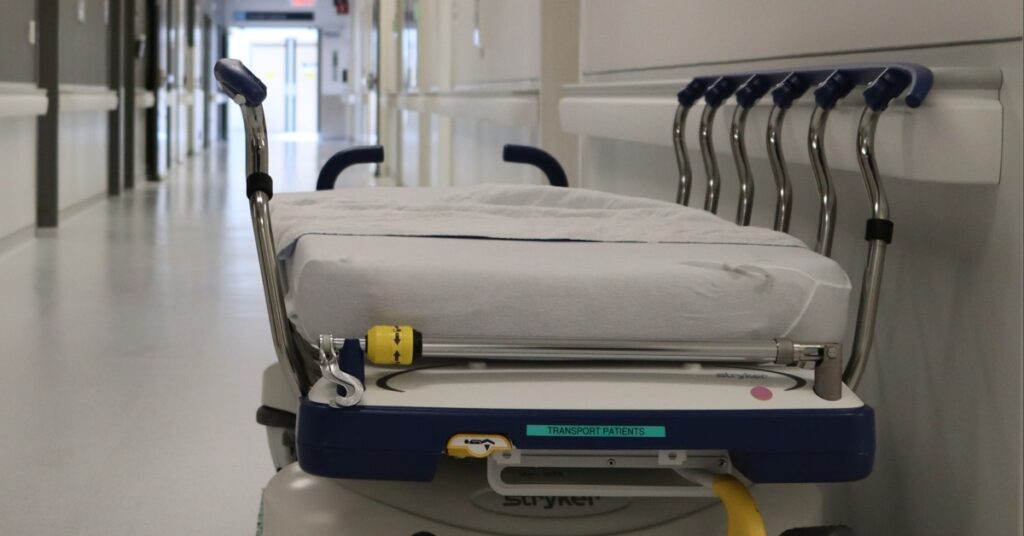
The Highest Paying States for Guidance Counselors
While most commonly associated with providing assistance in college or [...]
When Tiger Woods took home his fifth green jacket in the 2019 Masters tournament, he might have had a special team of people to thank: the dedicated physical therapists who helped him recover from four back surgeries just in time to take the trophy. If you’re like Tiger and have experienced a major injury or surgery, you know that regaining mobility and getting back to your everyday lives is a huge personal accomplishment—and that physical and occupational therapists are there to help make it happen.
According to the Bureau of Labor Statistics, physical and occupational therapy make for some of the fastest-growing professions in the United States. Jobs in physical therapy are expected to grow at four times the national average, and jobs in occupational therapy will increase almost as quickly. Because physical and occupational therapy is so important to promoting general health and wellness, leaders and researchers in these areas are always in demand. But what’s the best way to prepare for jobs in these fields?
A master of science in rehabilitation sciences will prepare you to pursue research, development, and leadership in physical rehabilitation, neurological rehabilitation, cardiopulmonary rehabilitation, and sports medicine while setting you up for a career in scholarship, clinical practice, or both. It’s a graduate-level healthcare degree with many benefits. These seven are just the start.
1. You’ll gain experience in research and clinical science.
In a master’s in rehabilitation science program, academic study is usually combined with research and clinical experience at partner facilities or institutions. The curriculum typically includes training on research design and measurement methods as well as a deep dive into the latest research and best practices in clinical settings. This leads to a multifaceted understanding of exercise science, both in theory and in practice, and prepares students to assume a number of roles in the rehabilitation sciences field. As a student, this means you’ll be able to move freely into research or management careers in academia, healthcare facilities, government agencies, and private therapy practices.
2. Any way you approach it, your degree will go hand-in-hand with certification.
Some master’s in rehabilitation sciences degrees require applicants to have a certification in physical therapy or a related field at the start of their program. Others build certification preparation into their curriculum. For example, the rehabilitation science program at California University of Pennsylvania qualifies students for Corrective Exercise Specialist (CES) certification, and the MS in Kinesiology and Rehabilitation Science program at the University of Hawaiʻi at Mānoa prepares them for the Certified Rehabilitation Counselor (CRC) exam and the National Counselor Examination for Licensure and Certification.
If you’re already certified, an MS will advance your credentials and help you take the next step in your career. If you aren’t certified, no sweat, your coursework will help you achieve professional certification.
3. You’ll face a strong job market—and a career that’s going places.
Earning an MS in rehabilitation sciences is a smart step towards taking on additional responsibility at work, including management and leadership roles. After earning your master’s, you may go on to direct a rehabilitation department in a medical facility, lead a research team in academia, or manage a private physical therapy practice.
You’ll also be graduating into a welcoming job market. The field of physical therapy is growing four times as fast as the average profession in the US, with a 28 percent growth rate anticipated over the next several years. The outlook for rehabilitation counselors and occupational therapists is also good, with an anticipated 13 percent and 24 percent growth respectively.
4. Talk about “earning power.”
According to Payscale, rehabilitation managers bring in an average salary of $85,458 per year, and rehabilitation directors average more than $90,000 per year. The Bureau of Labor Statistics has some impressive numbers, too, with physical therapists making more than $86,000 a year, and occupational therapists making a median of $83,000. And while your salary will vary based on the type of rehabilitation science you choose to practice, a master’s degree will almost guarantee that your position will be a high paying one.
5. You can dig into a specialty.
MS in rehabilitation sciences degrees focus on various areas of research concentration such as neurological, cardiopulmonary, pediatric, and orthopedic rehabilitation. Many programs also offer in-depth clinical fieldwork opportunities, which can be tailored to your interests. Graduates can then become board-certified clinical specialists in these or other areas through the American Board of Physical Therapy Specialties (ABPTS).
6. You can begin a career in academia (if that’s your thing).
If you’re interested in working as a researcher or college professor, a master’s degree will prepare you to pursue the PhD you’ll need to get there. The PhD route will immerse you in intensive research and can lead to a faculty position at the college level (and hey, maybe the tenure track). If you love academia but don’t see a PhD in your future, you can use your master’s to enter rehabilitation research. It’s a critical field that will allow you to develop new understandings of injury and disability and contribute to the development of innovative therapies.
7. You’ll use science to change lives.
Those working in physical therapy, occupational therapy, and other aspects of rehabilitation sciences find profound career satisfaction in helping individuals with disabilities or injuries learn to use their bodies in new ways. With an advanced degree, you’ll broaden your knowledge and experience and sharpen your clinical skills. Whether you’re studying exercise science, working as a speech-language pathologist, or helping football players get back in the game, you’ll make a difference with your career.
Occupational therapy and physical therapy rank among the top 20 of U.S. News and World Report’s Best 100 Jobs for a reason. Careers in rehabilitation science come with excellent compensation, flexibility, and relatively low stress. A master’s degree will help you meet your professional potential and apply cutting-edge research towards the ultimate goal of improving patient outcomes. Plus, your parents can say, “we have a doctor in the family.”
Questions or feedback? Email editor@noodle.com

While most commonly associated with providing assistance in college or [...]

Certifications certainly boost one's resume, demonstrating advanced proficiency in a [...]

Whether handling case management in homeless shelters, working as mental [...]

Social workers toiled heroically to deliver relief in the face [...]

Dual degree programs still represent a significant commitment, but those [...]
Categorized as: Health Informatics & Sciences, Social Work & Counseling & Psychology